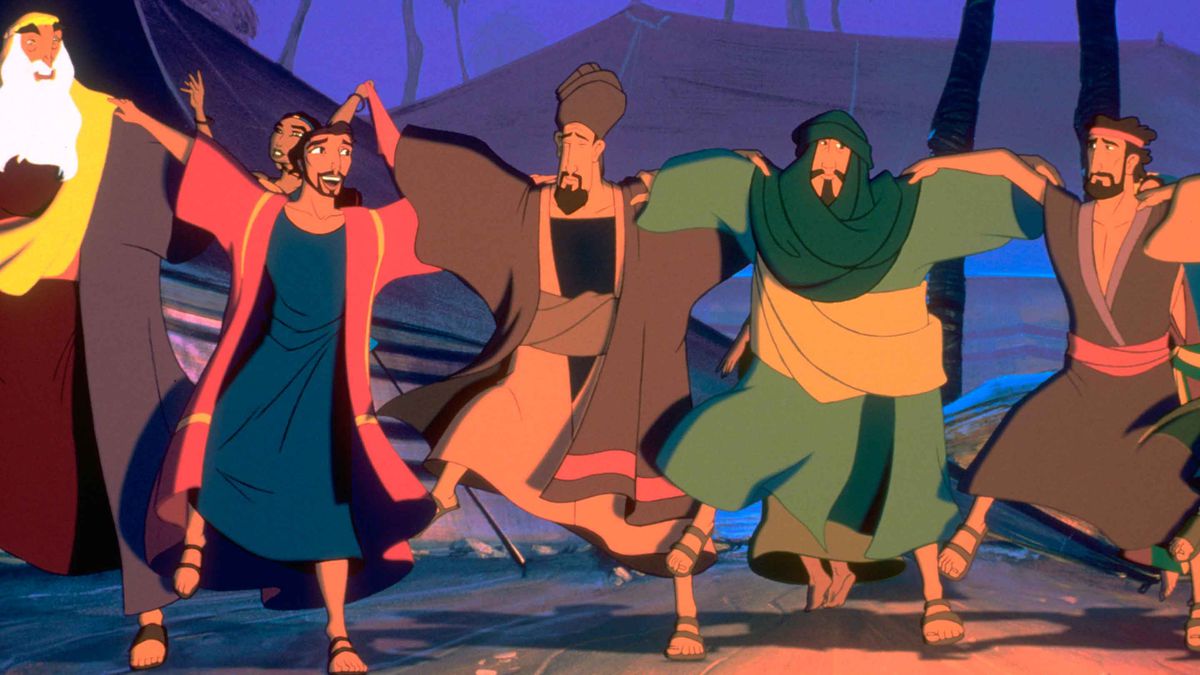In an alternate reality, The Prince of Egypt started a new wave of American animation
Twenty-five years ago the DreamWorks film was released The prince of Egypt visit theaters. Its release could have changed American animation – and perhaps it should have. But that didn't happen.
Instead, the DreamWorks projects released around the turn of the millennium did Shrek that caused a cultural explosion, quickly shifting the focus of American animated films from compelling musicals to rip-roaring comedies. Maybe at that time, The prince of Egypt seemed too much like what Disney was doing: another animated musical, too much of the same.
But The prince of Egypt was intended to go beyond Disney projects, broadening the audience for animated films in America and appealing to a more mature audience. It follows older characters than most animated films of the time, and it covers the story of a figure important to three major world religions. But the biggest difference is the tone: The prince of Egypt maintains a serious and dramatic tenor throughout the film, a rarity for American animation, which often features lighthearted jokes and comic relief in even the bleakest films. But from the start, DreamWorks wanted The Prince of Egypt have an impact.
Image: DreamWorks Animation
'We wanted to do something that reached more adults' The prince of Egypt co-director Brenda Chapman told Polygon in 2018, on the film's twentieth anniversary. “We were hoping to break out of that and bring all the different species to America. How about an animated film with an R rating? How about a PG-13 or an NC-17 or whatever? It's like trying to escape from that box. We didn't quite succeed.”
In another timeline, true The prince of Egypt dominated pop culture instead Shrek, the decade of snarky, self-aware animated comedies that followed, was replaced by more mature and serious animated stories intended for both adults and children. Finally, Disney used to be tries to steer its films in that direction as much as DreamWorks was. 1995 Pocahontas was presented as a serious, Oscar-worthy epic. (It didn't quite land as intended.) 1996 The hunchback of the Notre Dame was much darker than most Disney films that came before it. DreamWorks Animation simply picked up on what Disney created, even though DreamWorks' 2D era was short-lived.
The prince of Egyptwhich which started this short micro trend is the most serious in size and the best of the bunch. The prince of Egypt is a retelling of the Bible book of Exodus: the story of Mosesthe secretly Hebrew adopted son of the Egyptian Pharaoh, and eventually a prophet chosen by God to lead his enslaved people to freedom.
There are no cutaway jokes, clever-talking gargoyles, or self-referential humor in this serious story. It's stunning, from the beautiful animation, which depicts ancient Egypt in great detail, to the haunting soundtrack by Hans Zimmer. It is also fearless in its depiction of slavery and the devastation of the plagues that God brings upon the Egyptians when Pharaoh refuses to release the Hebrews.
But perhaps the most memorable aspect of the film is the way the filmmakers approached Moses as a character. By focusing on the brotherly relationship between Moses and the Pharaoh's biological son, Ramesses, a more human angle is given to the otherwise grandiose biblical epic.
However, this more drama-oriented approach did not find the intended adult audience. The late 1990s and early 2000s embraced cynicism in pop culture, so a film that openly mocked Disney and Disney wannabes was about to take off. But even with innuendos flying under the radar, American animation remained largely in the PG, family-friendly zone. At that point, more than fifty years of Disney films had solidified expectations for animated films in the United States in a way that did not affect Asia, Europe, and the rest of the world. As filmmakers like Chapman attempted to push boundaries and bring American animation in line with the broad spectrum of other countries' animated projects, America continued to assume that cartoons, like comics, were exclusively for children.

Image: DreamWorks Animation
Since then, however, studios and filmmakers have increasingly pushed for audiences to take American animation seriously — and generations of fans who grew up on more cutting-edge animated films are more open to the possibility. The increasing accessibility and popularity of international animation has broadened horizons and increased expectations. It's now not that shocking for audiences to see animations that remain tonally serious and tackle more mature stories. American animation is shifting along, becoming more action-adventure stories, and finally playing with visual design and expanding beyond the standardized CG that has been defined in the field for the past twenty years.
Perhaps one day the dream of Chapman and her fellow filmmakers will become a reality, and American animation can expand more consistently into adult stories. We're seeing it happen quickly on television, with shows like Blue-eyed samurai, InvincibleAnd Scavengers rule to push the medium and expand the adult animation genre beyond crass comedies and four-quadrant films aimed at all audiences. The transition has yet to reach full theatrical release, especially in American studios, but the tide is turning. The prince of Egypt may not have been the film that changed them, but that doesn't mean the tide won't turn at all.
The prince of Egypt is available to stream on Peacock and Prime Video, and is available for digital rental at Amazon, Vuduand other services.
